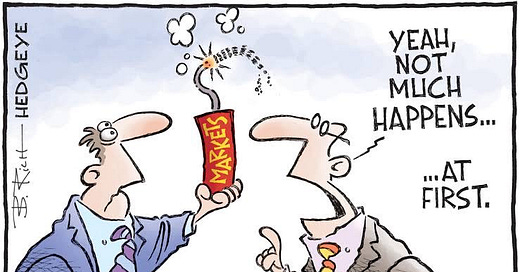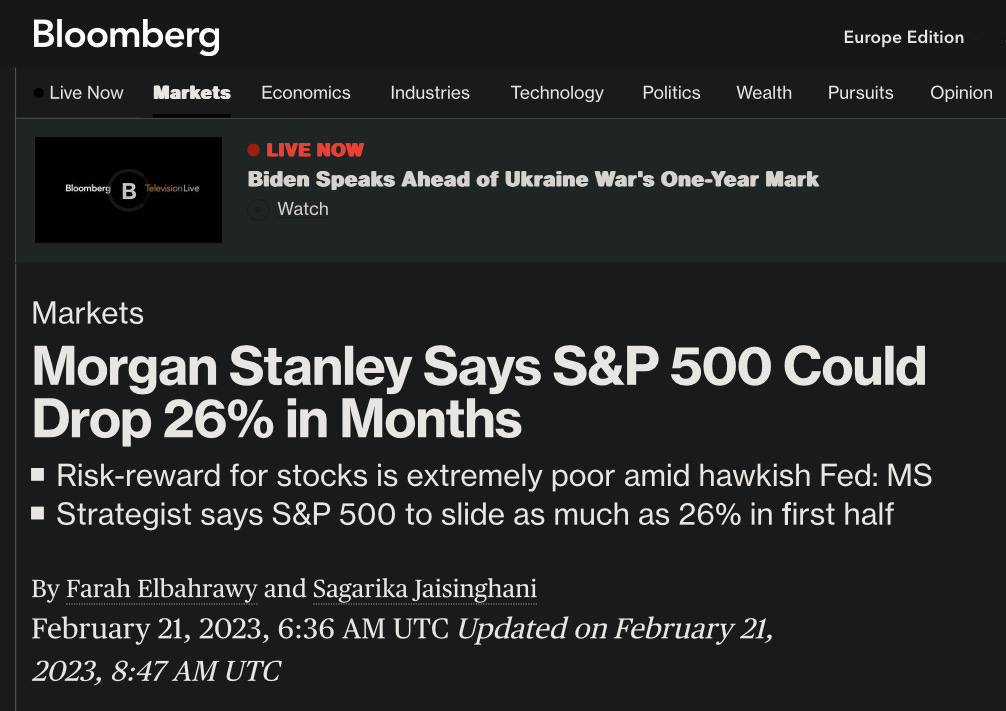What investors seem to forget on a consistent basis is the returns they earn are directly related to the price they pay.
Today’s Chart of the Day comes to us from Morgan Stanley Research via a recent article in Bloomberg.
In the piece, see Figure 1, Morgan Stanley strategists make the case for a 26% drop in the value of the S&P 500 — a move that would take the index to approximately 3,000.
Based on Morgan Stanley’s research, Bloomberg notes that the recent rally:
“doesn’t bode well for stocks as the sharp rally this year has left them the most expensive since 2007 by the measure of equity risk premium, which has entered a level known as the “death zone”
The article also goes on to state:
“The risk-reward for equities is now “very poor,” especially as the Fed is far from ending its monetary tightening, rates remain higher across the curve and earnings expectations are still 10% to 20% too high”
The primary metric used to support Morgan Stanley’s assertion of a “very poor” risk-reward is the equity risk premium — the ERP chart provided in the article is displayed in Figure 2.
Why is the equity risk premium (ERP) important? Let’s start with a definition.
The equity risk premium is the excess return that investors expect to receive from investing in stocks over the risk-free rate of return. It is a measure of compensation for the risk of investing in the stock market.
In other words, the equity risk premium is a measure of how much an investor is going to be compensated for investing in the stock market above what they can earn on a risk free asset, such as U.S. treasury bills.
When the ERP is high, 600+ basis points, investors are likely to be well compensated for accepting the risk involved in equity investing, experiencing above average stock market returns over the next several years.
Currently, Morgan Stanley’s measure of the ERP stands at only 166 basis points, 1.66%, vs a historical average of approximately 450 basis points, 4.5%.
At current prices, stock market investors are not being compensated properly for the risk associated with investing in public equities. A significant sell off in stock prices, combined with a decline in risk free rates, both usually seen during recessions, would reset the equity risk premium to levels consistent with above average forward annualized returns.
What investors seem to forget on a consistent basis is the returns they earn are directly related to the price they pay. Be disciplined and never lose sight of the price you’re willing to pay.
— Brant
Disclaimer: The content provided on the Capital Notes newsletter is for general information purposes only. No information, materials, services, and other content provided in this post constitute solicitation, recommendation, endorsement or any financial, investment, or other advice. Seek independent professional consultation in the form of legal, financial, and fiscal advice before making any investment decision. Always perform your own due diligence.






